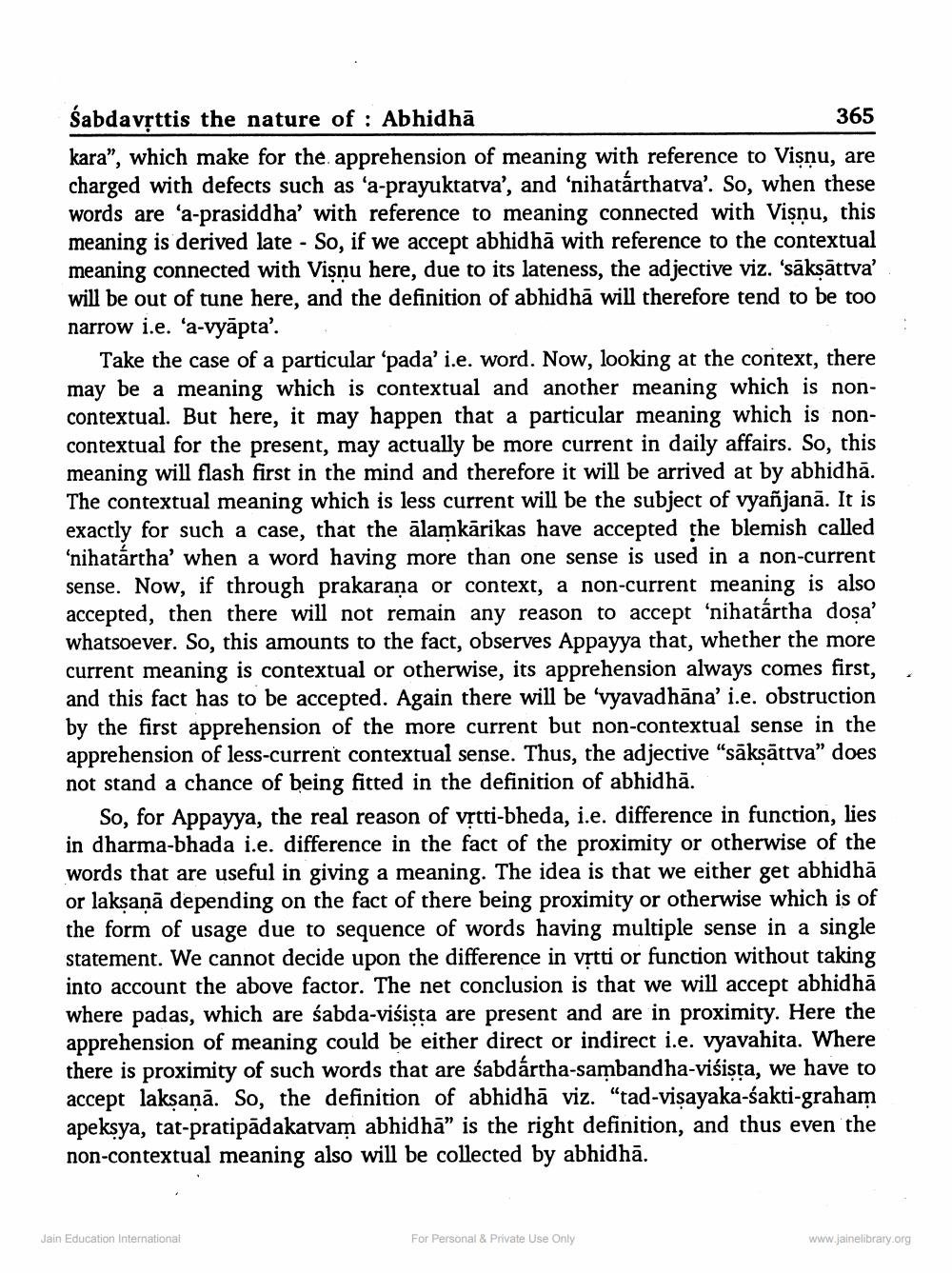________________
365
Śabdavșttis the nature of : Abhidhā kara", which make for the apprehension of meaning with reference to Visnu, are charged with defects such as 'a-prayuktatva', and 'nihatártharva'. So, when these words are 'a-prasiddha' with reference to meaning connected with Vişnu, this meaning is derived late - So, if we accept abhidhā with reference to the contextual meaning connected with Visnu here, due to its lateness, the adjective viz. 'sāksāttva' will be out of tune here, and the definition of abhidhā will therefore tend to be too narrow i.e. 'a-vyāpta'. .
Take the case of a particular 'pada' i.e. word. Now, looking at the context, there may be a meaning which is contextual and another meaning which is noncontextual. But here, it may happen that a particular meaning which is noncontextual for the present, may actually be more current in daily affairs. So, this meaning will flash first in the mind and therefore it will be arrived at by abhidhā. The contextual meaning which is less current will be the subject of vyañjanā. It is exactly for such a case, that the ālamkārikas have accepted the blemish called ‘nihatártha' when a word having more than one sense is used in a non-current sense. Now, if through prakarana or context, a non-current meaning is also accepted, then there will not remain any reason to accept ‘nihatārtha dosa' whatsoever. So, this amounts to the fact, observes Appayya that, whether the more current meaning is contextual or otherwise, its apprehension always comes first, and this fact has to be accepted. Again there will be 'vyavadhāna' i.e. obstruction by the first apprehension of the more current but non-contextual sense in the apprehension of less-current contextual sense. Thus, the adjective “sākṣātrva” does not stand a chance of being fitted in the definition of abhidhā.
So, for Appayya, the real reason of vrtti-bheda, i.e. difference in function, lies in dharma-bhada i.e. difference in the fact of the proximity or otherwise of the words that are useful in giving a meaning. The idea is that we either get abhidhā or laksaņā depending on the fact of there being proximity or otherwise which is of the form of usage due to sequence of words having multiple sense in a single statement. We cannot decide upon the difference in vrtti or function without taking into account the above factor. The net conclusion is that we will accept abhidhā where padas, which are sabda-viśista are present and are in proximity. Here the apprehension of meaning could be either direct or indirect i.e. vyavahita. Where there is proximity of such words that are sabdártha-sambandha-visista, we have to accept laksaņā. So, the definition of abhidhā viz. "tad-vișayaka-sakti-graham apeksya, tat-pratipadakatvam abhidhā" is the right definition, and thus even the non-contextual meaning also will be collected by abhidhā.
Jain Education International
For Personal & Private Use Only
www.jainelibrary.org




